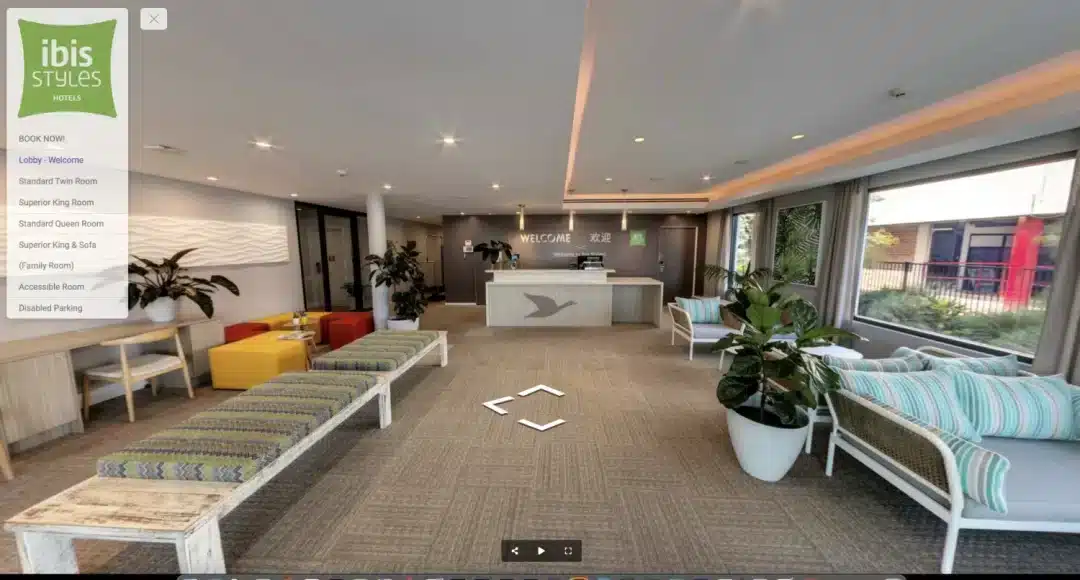10 Virtual Tour Myths Debunked:
Why Your Business Needs Content Marketing Strategy
In today’s digital landscape, virtual tours have become an essential marketing strategy for businesses to showcase their spaces and attract customers. In fact every premises based business should prioritise 360 virtual tour content marketing. However, many misconceptions persist about their value and effectiveness. Let’s debunk these myths and reveal the truth about virtual tours for businesses.
Myth 1: 360 Tours Are Too Expensive
While virtual tours may cost more than standard photography, they often provide a better return on investment. The price has become more affordable as technology has advanced, and the benefits in terms of customer engagement and conversion rates can far outweigh the initial cost. Much of that additional value comes from how long the virtual tour may last as a digital asset. In many cases, virtual tours remain an accurate and relevant representation of the business for over 5 years. It only really needs updating when the place looks different.
Myth 2: It’s Just a Passing Fad
Far from being a temporary trend, 360 virtual tour content marketing has become an integral part of online marketing strategies. They offer customers a unique and immersive way to explore businesses before visiting in person, which is increasingly important in our digital-first world. And since the pandemic and all the lockdowns, it’s been a proven strategy to keep your business going even when people may not be able to visit in person.
Myth 3: People Don’t Actually Use Virtual Tours
This myth couldn’t be further from the truth. According to Google, listings with virtual tours are twice as likely to generate interest. Users spend 5-10 times longer on websites with virtual tours compared to those without, indicating high engagement and interest.
Myth 4: Virtual Tours Are Not Interactive
Modern 3D virtual tours offer users complete control, allowing them to explore any area of the space at their own pace. This interactivity provides a sense of freedom and authenticity that static images or videos can’t match. It really is a completely new way of saying ‘seeing is believing’.
Myth 5: Virtual Tours Threaten Privacy
While privacy concerns are occasionally valid, they can be easily addressed with professional virtual tour creation. Experienced providers use techniques like blurring or removing sensitive information to ensure privacy is maintained. Plus doesn’t it make sense that a business that can be visited in person is visible to the public anyway?

Sample screenshot of virtual tour for IBIS Styles, The Entrance NSW
Myth 6: Google Virtual Tours Don’t Impact SEO
This is a significant misconception. Virtual tours can substantially improve your SEO performance. They increase dwell time on your website, which is a crucial SEO metric. Google’s algorithm interprets longer time spent on a page as an indicator of valuable content, potentially boosting your search rankings. There’s also the fact that if the virtual tour is published using Google Street View on your Google Business Profile (GBP/GMB) you’ll have more content on a Google held asset that people often use when they don’t look at a website.
Myth 7: You Can’t Share 360 Content on Social Media
Virtual tours are highly shareable across a number social media platforms. For example, they can be shared on on Facebook and LinkedIn as links., and even uploaded to YouTube as a 360 VR video but without the overlay (just the 360 photos as a slideshow). This ability to share your virtual tour increases your online visibility and can lead to valuable backlinks, further enhancing your SEO.
Myth 8: Virtual Tours Aren’t Good for Conversions
On the contrary, 360 virtual tour content marketing is a very effective for conversions. By adding interactive hotspots with calls-to-action like “Buy Now,” “Learn More,” or “Book Now,” businesses can guide users through the sales funnel.
Myth 9: 360 Photography Often Looks Low Quality
The quality of a virtual tour depends on the equipment and expertise of the creator. Professional virtual tour photographers use high-end cameras, specialised lenses, and advanced software to produce stunning, high-resolution tours. When hiring a virtual tour provider, look for examples of their work and check their credentials to ensure you get a high-quality result. In fact, in some cases, virtual tour images can even be good enough for very large panoramic prints ( I know, I’ve sold a number!)
Myth 10: Virtual Tours Don’t Provide Measurable Value
The data proves otherwise. Here are some compelling statistics:
- 90% of users say a virtual tour is useful in their decision-making process.
- 95% of people are more likely to call about products or services that have virtual tours.
- Businesses that use virtual tours could see a 30% increase in physical foot traffic.
- Anyone who measures their analytics will see just how much a virtual tour gets used. For example a business I shot a tour for a few years ago has had over 350,000 views of the virtual tour images!
Conclusion: Embrace the Power of Virtual Tours
By dispelling these myths, businesses can better understand the value of virtual tours. They offer an engaging, cost-effective way to showcase your space, attract customers, and stay competitive in an increasingly digital marketplace. As more consumers rely on online information to make decisions, having a virtual tour can set your business apart and provide the immersive experience that today’s customers expect.
Remember, a well-crafted virtual tour is more than just a visual representation of your business—it’s a powerful marketing tool that can drive engagement, build trust, and ultimately lead to increased foot traffic and sales. Don’t let these myths hold your business back. Embrace virtual tours and unlock their potential for your digital marketing strategy.